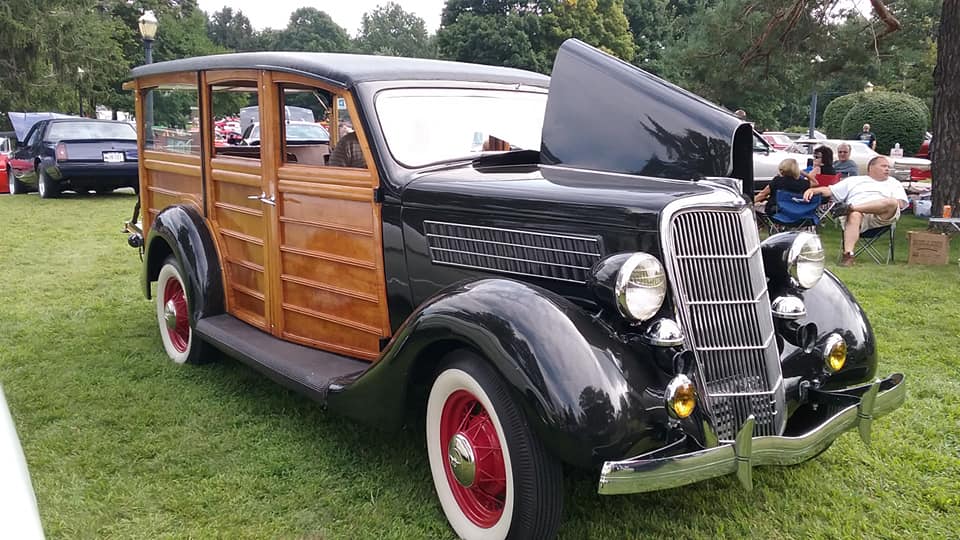Car: Ford Model B Woody Wagon
Year: 1935
What makes it special: “Woodies” were a type of station wagon where the rear car bodywork is constructed of wood or is styled to resemble wood elements. Originally, wood framework augmented the car’s structure. Over time manufacturers supplanted wood construction with a variety of materials and methods evoking wood construction, including infill metal panels, metal framework, or simulated wood-grain sheet vinyl bordered with three-dimensional, simulated framework. As a variant of body-on-frame construction, the woodie as a utility vehicle originated from the early practice of manufacturing the passenger compartment portion of a vehicle in hardwood. Woodies were produced as variants of sedans and convertibles as well as station wagons, from basic to luxury. They were typically manufactured as third-party conversions of regular vehicles, some by large, reputable coachbuilding firms and others by local carpenters and craftsmen for individual customers.
What made it famous: The 1935 Ford was a refresh on the popular V8-powered Ford. The four-cylinder Model A engine was no longer offered, leaving just the 221 cu in V8 to power every Ford car and truck. The transverse leaf spring suspension remained, but the front spring was relocated ahead of the axle to allow more interior volume. The body was lowered and new “Center-Poise” seating improved comfort. Visually, the 1935 Ford was much more modern with the grille pushed forward and made more prominent by de-emphasized and more-integrated fenders. The wooden panels were manufactured at the Ford Iron Mountain Plant in the Michigan Upper Peninsula from Ford owned lumber. Two trim lines were offered, standard and DeLuxe, across a number of body styles including a base roadster, five-window coupe, three-window coupe, Tudor and Fordor sedans in flatback or “trunkback” versions, a convertible sedan, a woody station wagon, and new Model 51 truck.
Why I would want one: Woody wagons are just fun and cool. You can’t help feeling the “surfer-vibe” when you see one.
Fun fact: An oil pressure gauge costing $4 and two windshield wipers were optional, but if you got the optional radio, it replaced the ash tray.
